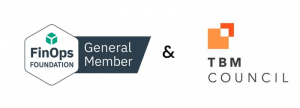Tame Your Cloud Spend – Here’s How
If your monthly cloud bill makes you wince – you’re not alone. Despite promises of scalability and cost savings, many organizations discover their cloud spend is rising faster than expected. And it’s not just about overprovisioning. Even mature teams find that the cloud’s elasticity can lead to financial unpredictability.
This post breaks down the real reasons cloud costs balloon, why traditional fixes often fall short, and how adopting FinOps practices can bring sanity to your cloud budget.

1. The Hidden Cost Drivers Behind Cloud Sprawl
Let’s start with the basics. Your cloud bill isn’t just about how many VMs or containers you run. It includes:
- Idle resources (think test environments no one shut down)
- Unattached storage volumes
- Data egress charges
- Underutilized reserved instances
- Poor tagging hygiene (making showback/chargeback impossible)
Multiply these issues across hundreds of accounts, teams, and services, and your bill becomes a black box.
2. Why Tagging and Budgets Aren’t Enough
Most teams try to tackle the issue by setting cloud budgets, assigning owners, and enforcing tags. These are good practices — but they often break down in reality:
- Engineers forget to tag.
- Shared resources don’t map cleanly to cost centers.
- Finance teams get vague answers about spikes.
Ultimately, governance without visibility and accountability doesn’t scale.
3. What FinOps Actually Means (and Why You Need It)
FinOps (short for Financial Operations) is more than cost tracking. It’s a cross-functional operating model that brings engineering, finance, and product together to make informed tradeoffs.
Key FinOps principles include:
- Real-time visibility into spend by team, service, and environment
- Benchmarking usage vs. commitment (e.g., reserved instances, savings plans)
- Accountability by aligning ownership to budgets
- Automation to rightsize, scale down, or pause unused resources
Think of FinOps as DevOps for your cloud wallet.
4. The Most Common Cloud Cost Myths… Debunked
- “It’s just a few extra dev environments.”… multiplied by 10 teams, that’s real money.
- “Reserved Instances will save us.”… unless you overcommit and don’t use them.
- “We already use auto-scaling.”… but did you right-size the instance types?
- “This is an ops problem.”… It’s everyone’s problem. Product, finance, and dev all influence spend.
5. What You Can Do Right Now
Here’s a tactical list to start improving today:
- Run a cost allocation review: Are you tagging >80% of spend? Are shared services mapped?
- Audit idle and zombie resources: Kill unused test/dev VMs, orphaned volumes, and unused load balancers.
- Set up real-time alerts: Catch unexpected spikes before the monthly bill.
- Assign owners to cloud spend categories: Accountability drives action.
- Evaluate FinOps tooling: Consider solutions like IBM Turbonomic, Apptio Cloudability, or native AWS/GCP cost tools.
6. Looking Ahead: Building a FinOps Culture
FinOps isn’t a one-time fix — it’s a mindset. Building a culture of financial accountability across engineering and business functions pays dividends:
- Shorter time-to-insight for cloud decisions
- Smarter forecasting and budgeting
- Greater trust between IT and finance
As your organization scales, FinOps becomes the guardrail that enables innovation without breaking the bank.
Summary
Your rising cloud bill isn’t a failure of technology. It’s a signal that your organization needs better visibility, ownership, and decision-making processes. That’s exactly what FinOps delivers.
So the next time someone asks, “Why is our AWS bill so high?” — you’ll not only have the answer, you’ll have a plan.
Want more? Check out The FinOps Foundation and learn how IBM Turbonomic can help automate resource optimization without guesswork. Also, visit FinOps Universe – the go-to hub for mastering cloud financial operations. Get cutting‑edge insights, community wisdom, and practical tools to optimize cloud spend and make smarter cost decisions.
Contact 321 Gang to start a conversation on improving your FinOps capability.


321 Gang | 14362 North FLW | Suite 1000 | Scottsdale, AZ 85260 | 877.820.0888 info@321gang.com

